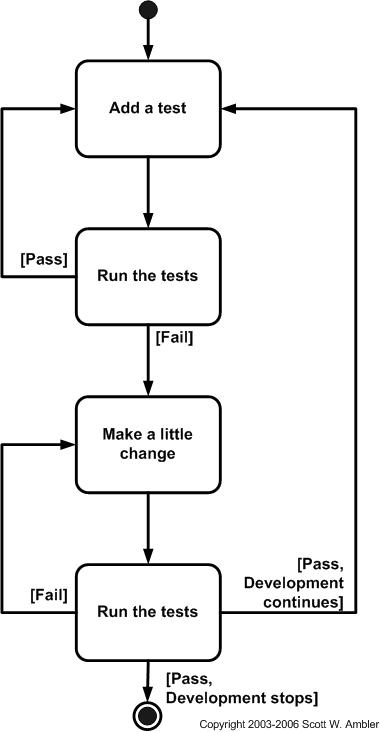Agile Scrum Note 06
Scrum best practices you should know
Continuous Refactoring
- Cleaning up the code (changes that do not change the expected inputs or outputs) for one or more of the following reasons:
- Better readability
- Optimizing processing logic
- Improving maintainability
- Improving performance
- Complying with design guidelines and framework
- Re-factoring is a best practice - particularly important in Agile, as the code gets built incrementally
- The team should write re-factoring stories and request the Product owner to prioritize
- Extreme Programming advocates continuous re-factoring
- Remember the Agile principle: "Continuous attention to technical excellence and good design enhances agility"
Pair Programming
- Two people looking at one machine with one keyboard and one mouse
- One driver and one navigator
- One implements, one strategizes
- All code written in pairs
- Produces 15% less output, but:
- Leads to better design, quality
- Succession planning
- Training opportunities
- Especially useful while
- Writing complex logic
- Debugging "hard-to-solve" problems
Continuous Integration
- Originated with the Extreme Programming development process, as one of its original twelve practices.
- Continuous integration is an approach that keeps everybody's code integrated and builds release infrastructure along with the rest of the application.
- Practices of continuous integration
- Maintain a single source repository
- Automate the build
- Make your build self- testing
- Everyone commits to the mainline every day
- Every commit should build the mainline on an integration machine
- Keep the build fast
- Test in a clone of the production environment
- Make it easy for anyone to get the latest executable
- Everyone can see what's happening
- Automate deployment
Configuration Management
- Best practices
- Invest in automation tools (automate the build, automate the tests)
- Enforce discipline in code check-ins (mandatory code review workflow, mandatory tests and code coverage reports)
- Use static code analyzers
- Use tools that allow multiple check-outs and safe merges
- Hire a good configuration manager to automate and then recede into the background
Quality in Agile
- Quality is defined as "conformance to specifications and fitness of purpose"
- Extrinsic or Customer perceived quality is perceived when the product is delivered to the customer and measured by the extent to which they realize "value" from it
- Intrinsic or Technical quality is the quality that is perceived by the team
- Technical quality has many facets including modularity, maintainability, scalability, reliability, etc.
- Extrinsic quality is non-negotiable, but Intrinsic quality is also critical to ensure that you can continue to deliver value
Scrum Quality - Home truths
- Building in "near releasable quality" Sprint after Sprint is DIFFICULT - but it is an important goal
- There is no separate QA team - there is ONE team and each member of the team is responsible for quality
- Quality has to be built into the development process
- Be prepared to make a heavy investment in automated testing
- Inspections have to be early and continuous - the later you give feedback, the harder (and costlier) it is to fix
- Inspections must incorporate verification (are we building the product right) and validation (are we building the right product)
Test Driven Development (TDD)
- The goal of every team should be to move towards Test-Driven Development
- Also known as Test first programming
- It is an evolutionary (iterative and incremental) approach to programming where agile software developers must first write a test that fails before they write new functional code.
- When adding a feature, a pair may perform dozens of these cycles, implementing and refining the software in baby steps until there is nothing left to add and nothing left to take away.
- Step:
- Quickly add a test, basically just enough code to so that the tests now fail.
- Run the tests, often the complete test suite, although for sake of speed they may run only a subset to ensure that the new test does in fact fail.
- Update the functional code so it passes the new test.
- Run the tests again.
- If the tests fail return to step 3.
- Once the tests pass the next step is to start over (agilists may also want to refactor any duplication out of their design as needed).

- Advantages of TDD:
- TDD forces developers to do detailed design just in time (JIT) before writing the code.
- It ensures that agile developers have testing code available to validate their work, ensuring that they test as often and early as possible.
- It gives developers the courage to refactor their code to keep it the highest quality possible, because they know there is a test suite in place that will detect if they have "broken" anything as the result of refactoring.
- Research shows that TDD substantially reduces the incidence of defects [Janzen & Saiedian].
- It also helps improve your design, documents your public interfaces, and guards against future mistakes.
Done criteria
- It is a good idea to clearly define the meaning of the term "Done"
- The Scrum Master can help the team come up with these guidelines
- For example, a story can be DONE when:
- Design is completed and reviewed by the architect
- Coding is completed for 100% of the paths described in the story
- Testing is completed for the story
- Regression testing is done to ensure no unexpected impacts
- All identified bugs are fixed
- Technical and user documentation is updated for the added/changed functionality
- Similarly, you can define DONE criteria for Sprints or Releases